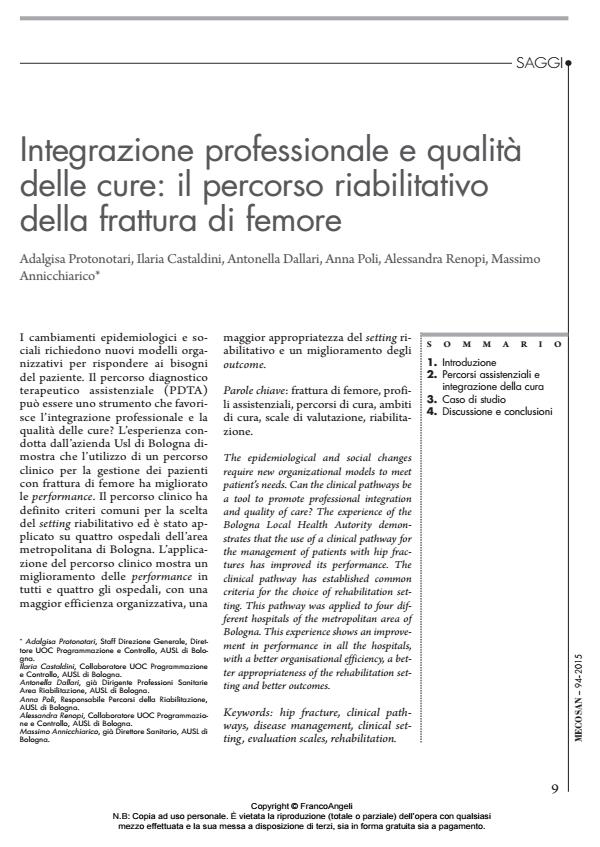Integrazione professionale e qualità delle cure: il percorso riabilitativo della frattura di femore
Journal title MECOSAN
Author/s Adalgisa Protonotari, Ilaria Castaldini, Antonella Dallari, Anna Poli, Alessandra Renopi, Massimo Annicchiarico
Publishing Year 2015 Issue 2015/94
Language Italian Pages 22 P. 9-30 File size 20154 KB
DOI 10.3280/MESA2015-094002
DOI is like a bar code for intellectual property: to have more infomation
click here
Below, you can see the article first page
If you want to buy this article in PDF format, you can do it, following the instructions to buy download credits

FrancoAngeli is member of Publishers International Linking Association, Inc (PILA), a not-for-profit association which run the CrossRef service enabling links to and from online scholarly content.
The epidemiological and social changes require new organizational models to meet patient’s needs. Can the clinical pathways be a tool to promote professional integration and quality of care? The experience of the Bologna Local Health Autority demonstrates that the use of a clinical pathway for the management of patients with hip fractures has improved its performance. The clinical pathway has established common criteria for the choice of rehabilitation setting. This pathway was applied to four different hospitals of the metropolitan area of Bologna. This experience shows an improvement in performance in all the hospitals, with a better organisational efficiency, a better appropriateness of the rehabilitation setting and better outcomes.
Keywords: Hip fracture, clinical pathways, disease management, clinical setting, evaluation scales, rehabilitation.
Adalgisa Protonotari, Ilaria Castaldini, Antonella Dallari, Anna Poli, Alessandra Renopi, Massimo Annicchiarico, Integrazione professionale e qualità delle cure: il percorso riabilitativo della frattura di femore in "MECOSAN" 94/2015, pp 9-30, DOI: 10.3280/MESA2015-094002